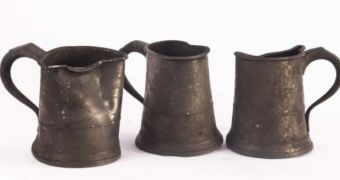Hundreds of historic artifacts, including rare 14th-century ale tankards and pipes, have been unearthed during excavations at London's oldest railway station by archaeologists working on the Thameslink Programme.
As part of the redevelopment project for the railway station, workers have dug pits of up to 6 meters deep and they discovered the remains of one of the earliest Roman buildings in the area. Daily Mail informs that the rare objects were found under the arches of London Bridge station and it is said that they will give insight into the formation and development of the first settlement in the area.
“The Thameslink Programme and the rebuilding of London Bridge station will bring the railway well and truly into the 21st century. It’s amazing that as part of our work we have caught a rare glimpse of life in the 14th century,” said John Hughes, development manager for Network Rail, as reported by Travel and Tour World.
The archaeologists unearthed a plethora of everyday objects used by people who lived in the area 650 years ago. Fragments of medieval floors and walls, clay tobacco pipes, ale tankards, and thousand-year-old timbers are just a few of the relics discovered during the excavations for the construction of the new Borough viaduct.
A 14th century tankard, which is believed to have been used to serve ale in the Abbot of Waverley’s town house, is also among the unearthed artifacts. The fascinating rare object is now on display in The Wheatsheaf Pub in Stoney Street. “We believe from its distinctive white clay that it was made in Cheam between 1350 and 1440,” said Jackie Keily, curator at the Museum of London.
Highly decorated clay tobacco pipes, an iron arrow head, other pewter tankards engraved with the names of the local pubs to which they belonged, and a small spoon engraved with the bust of William III have also been found.
Moreover, the researchers also uncovered parts of medieval floors and walls that could have been part of the houses that once stood along Tooley Street and which are known to have belonged to important clerics, and a previously unknown Roman bathhouse under Borough High Street.
“As one of London's oldest stations it's not surprising that we are unearthing such a range of interesting finds shedding light on London's development through the ages,” Nicky Hughes, the head of communications for Network Rail, said.

 14 DAY TRIAL //
14 DAY TRIAL //